Ultimate Guide: Tips to Trek During Monsoon
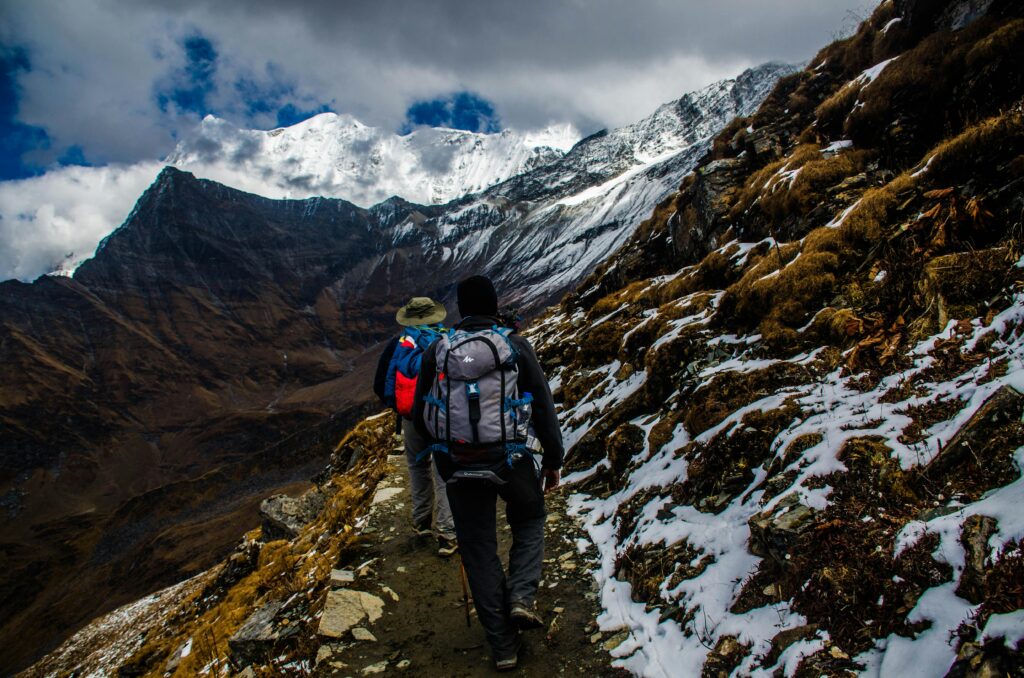
Monsoon trekking is an experience like no other. The lush greenery, roaring waterfalls, and mist-covered mountains create a mesmerizing landscape that beckons adventurers. However, trekking during the monsoon season also comes with its own set of challenges. As someone who has braved the elements on multiple monsoon treks, I’ve gathered insights and tips that can help you not only survive but thrive in these wet and wild conditions.
Understanding Monsoon Trekking
The Appeal of Monsoon Treks
The monsoon season transforms the landscape into a vibrant and lush paradise. Trekking during this time means you’ll encounter gushing streams, blooming flowers, and forests teeming with life. The air is cleaner, the temperatures cooler, and the trails less crowded compared to other seasons. There’s a sense of solitude and connection with nature that’s hard to find at any other time of the year.
However, the appeal of monsoon treks goes beyond the scenery. The challenges presented by the weather make these treks more adventurous. Navigating slippery trails, crossing swollen rivers, and dealing with unexpected downpours test your physical and mental resilience. It’s an opportunity to push your limits and come out stronger.
Common Misconceptions About Monsoon Trekking
Monsoon trekking is often misunderstood as being dangerous and difficult. While it’s true that the conditions can be challenging, with the right preparation and mindset, it’s entirely manageable. One common misconception is that all trails become inaccessible during the monsoon. In reality, many treks are perfectly safe and even more beautiful during this season.
Another myth is that monsoon treks are only for experienced trekkers. While experience does help, beginners can also enjoy monsoon trekking if they start with easier trails and take proper precautions. The key is to be well-prepared and to understand the specific challenges that come with trekking during the rainy season.
Preparing for a Monsoon Trek
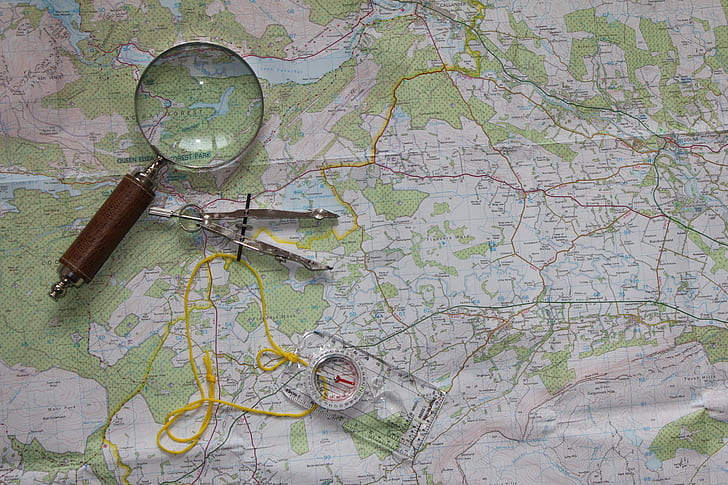
Researching the Right Trails
Not all trails are suitable for monsoon trekking. Some become too dangerous due to landslides, flash floods, or slippery terrain. Before setting out, it’s crucial to research and choose the right trail for your adventure.
Western Ghats Treks: The Western Ghats offer some of the best monsoon treks in India. Trails like Kudremukh, Mullayanagiri, and Sinhagad are popular during the monsoon for their stunning views and manageable difficulty. These treks showcase the beauty of the Western Ghats, with mist-covered peaks and verdant valleys.
Himalayan Treks: While many high-altitude Himalayan treks are risky during the monsoon, some lower-altitude ones are still accessible. Valley of Flowers and Hampta Pass are two such treks that are breathtakingly beautiful in the rain. The Valley of Flowers, in particular, is in full bloom during the monsoon, making it a paradise for nature lovers.
Northeast India Treks: The monsoon season is when the Northeast truly comes alive. Treks like Dzukou Valley in Nagaland and Meghalaya’s Living Root Bridges offer a unique trekking experience. The dense forests, rolling hills, and vibrant cultures of the Northeast make it a perfect destination for monsoon trekking.
Understanding the Weather Patterns
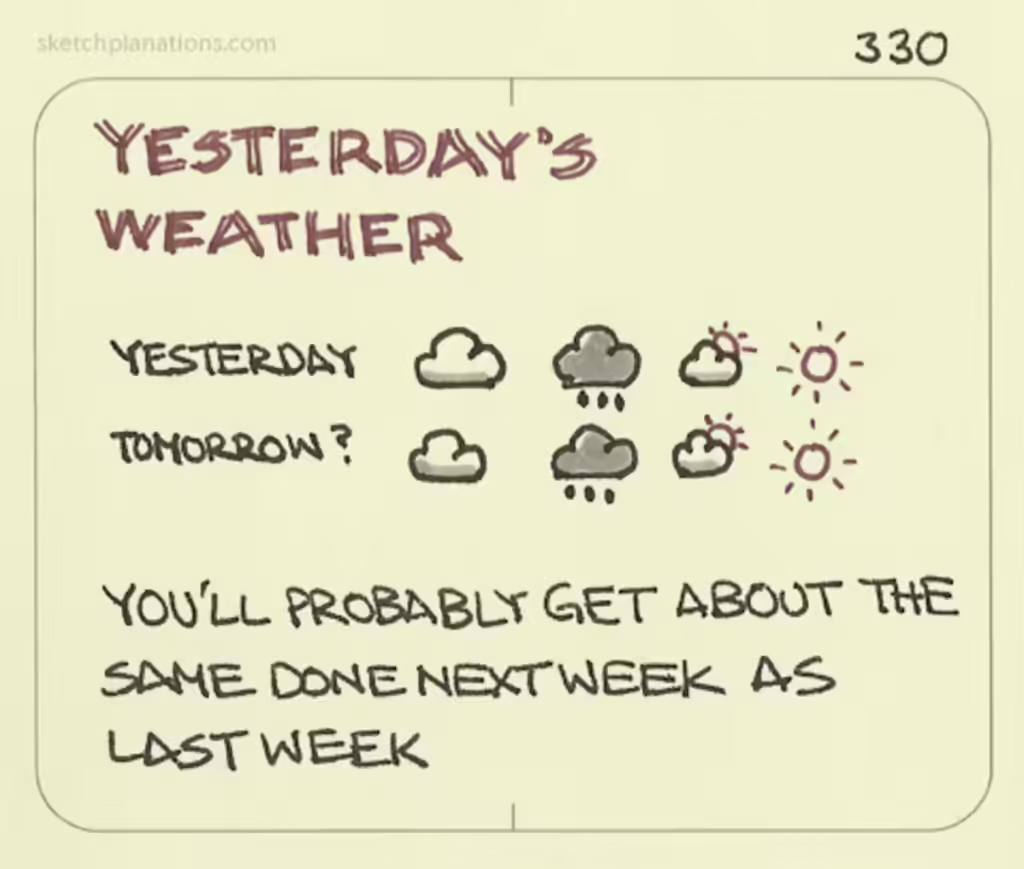
Monsoon weather can be unpredictable, with sudden changes in rain intensity and duration. Understanding the local weather patterns of the region you plan to trek in is essential.
Check weather forecasts regularly in the days leading up to your trek. Websites and apps like AccuWeather and IMD (India Meteorological Department) provide reliable weather updates. Pay attention to not just the rain forecasts but also warnings about landslides, thunderstorms, and floods.
In some regions, the monsoon is characterized by heavy downpours in the afternoon, with clearer skies in the morning. Plan your trek accordingly, aiming to cover more distance during the morning hours when the weather is relatively stable.
Physical and Mental Preparation
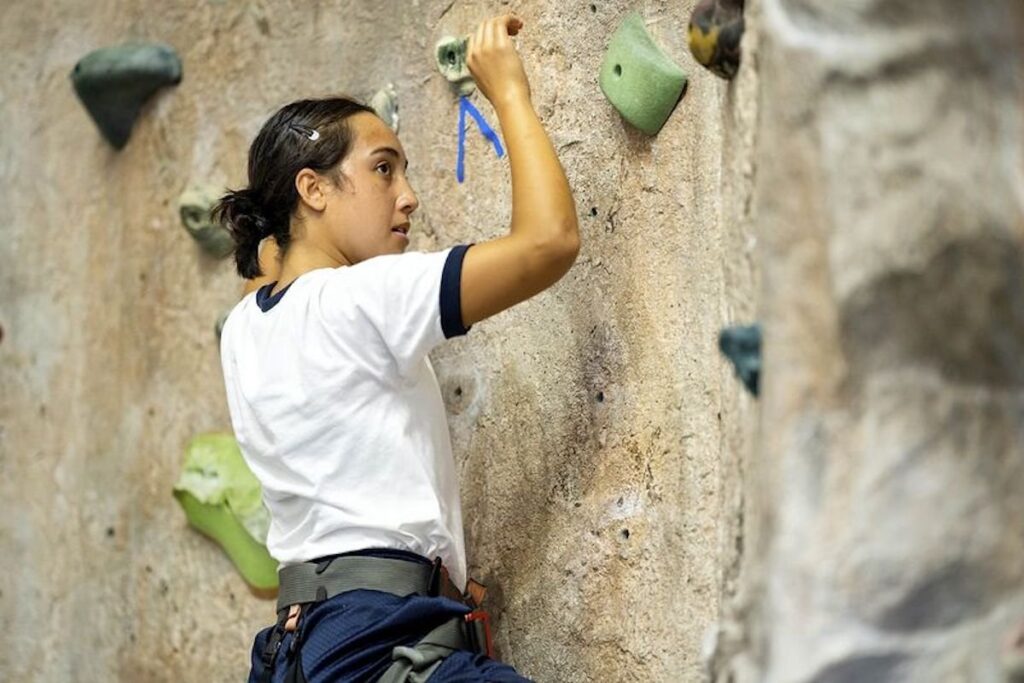
Trekking during the monsoon requires not just physical stamina but also mental toughness. The conditions can be demanding, with slippery trails, leeches, and the constant presence of rain.
Physical Preparation: Start preparing your body well in advance. Focus on building endurance through activities like running, cycling, and stair climbing. Strengthen your legs, core, and back with exercises like squats, lunges, and planks. Flexibility is also crucial, so incorporate stretching exercises or yoga into your routine.
Mental Preparation: Mentally, prepare yourself for the challenges you might face. The key is to stay positive and adaptable. If you encounter a tough section of the trail, take it one step at a time. Remember, the goal is to enjoy the journey, not just reach the destination.
Visualization techniques can also help. Picture yourself successfully navigating the challenges of the trek, whether it’s crossing a stream or climbing a steep slope. This mental rehearsal can boost your confidence and help you stay calm during the trek.
Essential Gear for Monsoon Trekking

Waterproof Clothing and Footwear
The right gear can make or break your monsoon trekking experience. Staying dry is crucial, not just for comfort but also for preventing hypothermia and other health issues.
Rain Gear: Invest in high-quality rain gear that can withstand heavy downpours. A waterproof jacket with a hood is a must. Look for jackets with breathable fabrics like Gore-Tex that keep the rain out while allowing sweat to escape. Waterproof pants are also essential to keep your lower body dry.
Footwear: Your choice of footwear is critical during a monsoon trek. Opt for waterproof trekking shoes that provide good grip on slippery surfaces. Shoes with Gore-Tex lining are excellent for keeping your feet dry. Pair them with moisture-wicking socks to prevent blisters. Gaiters are another useful accessory to keep mud, water, and leeches out of your shoes.
Backpack Essentials
Your backpack needs to be well-organized and waterproof. Use a waterproof cover to protect your backpack from the rain, and pack your belongings in dry bags or ziplock bags to ensure they stay dry.
Important Items:
- Dry Clothes: Always carry an extra set of dry clothes, including socks and underwear. It’s comforting to change into dry clothes after a long, wet trek.
- Food and Water: Pack energy-dense snacks like nuts, energy bars, and dried fruits. Carry enough water, but be prepared to purify water from natural sources if needed. A portable water filter or purification tablets can be lifesavers.
- First-Aid Kit: Your first-aid kit should include antiseptics, band-aids, pain relievers, anti-inflammatory drugs, and any personal medication. Add anti-leech ointments and insect repellent to your kit as well.
Trekking Poles and Accessories
Trekking Poles: Trekking poles are indispensable during monsoon treks. They provide stability on slippery trails and reduce the strain on your knees during descents. Make sure your poles are adjustable and have sturdy, non-slip tips.
Headlamps and Waterproof Gear: A headlamp is essential for navigating through foggy or rainy conditions, especially if you’re trekking early in the morning or late in the evening. Choose a waterproof headlamp with adjustable brightness settings. Waterproof bags for your electronics, including your phone and camera, are also important.
First-Aid Kit and Emergency Supplies
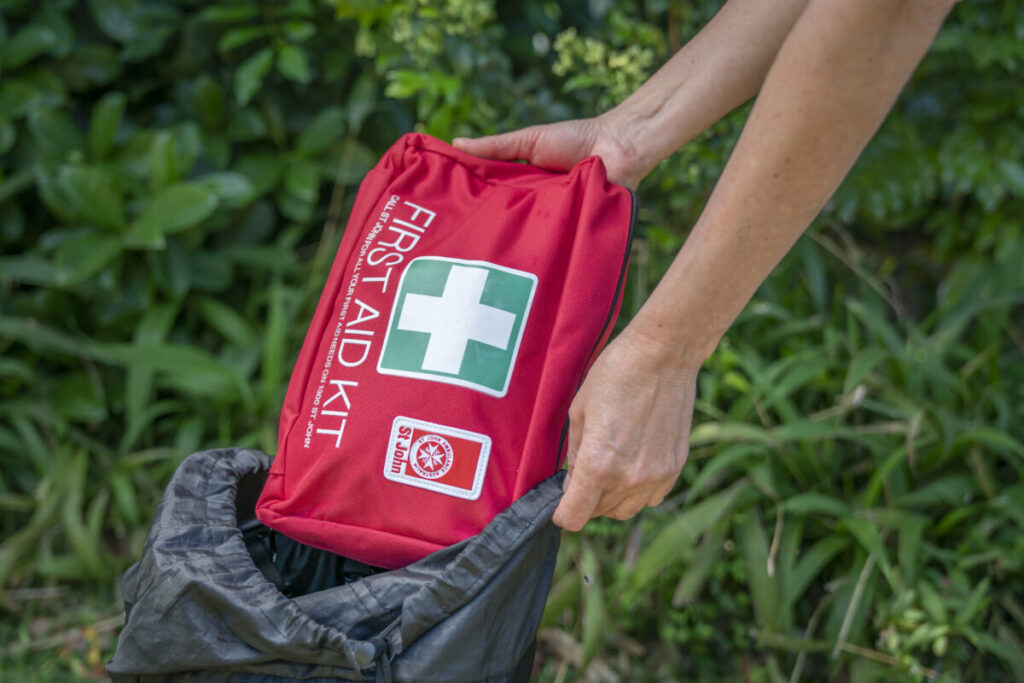
In the monsoon, injuries and illnesses can happen despite all precautions. A well-stocked first-aid kit is your first line of defense.
First-Aid Kit Essentials:
- Antiseptics and Bandages: Clean and cover any wounds immediately to prevent infection.
- Pain Relievers: Pack painkillers and anti-inflammatory medication for managing pain and swelling.
- Anti-Leech Ointments: These are particularly useful in areas prone to leech infestations.
- Insect Repellents: Insect bites can be more common during the monsoon, so carry a good insect repellent.
Emergency Tools: Always carry a whistle, a multi-tool, and a compact emergency blanket. These can be invaluable in an emergency. A personal locator beacon (PLB) can also be a good investment for remote treks, as it allows you to send out an SOS signal in case of an emergency.
Safety Tips for Monsoon Trekking
Navigating Slippery Trails
Slippery trails are one of the most significant challenges during a monsoon trek. Wet rocks, muddy paths, and moss-covered surfaces require extra caution and technique.
Foot Placement: When walking on slippery surfaces, focus on where you place your feet. Opt for flat rocks or solid ground rather than loose gravel or wet grass. Avoid stepping on wet roots, as they can be extremely slippery.
Trekking Poles: Use your trekking poles for added stability. They help distribute your weight more evenly, reducing the risk of slipping. When descending, take smaller steps and use your poles to control your speed.
Stay Alert: Always be on the lookout for potentially dangerous sections of the trail. If you encounter a particularly slippery or unstable area, take your time to navigate it carefully.
Dealing with Leech Infestations
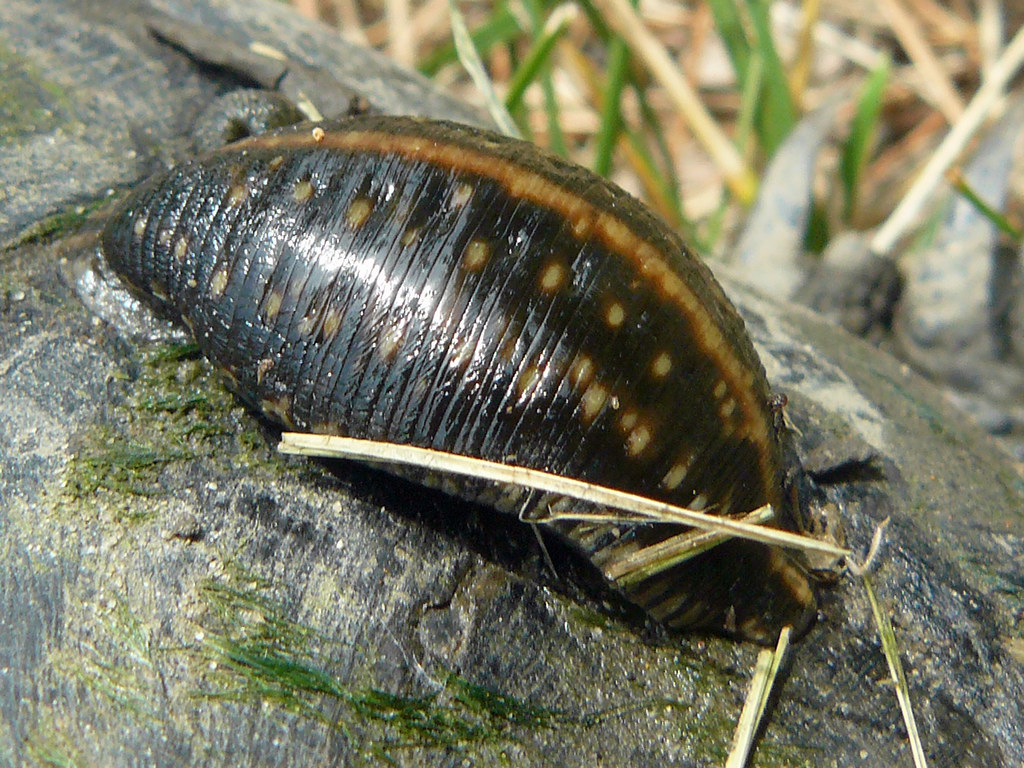
Leeches are a common nuisance during monsoon treks, especially in dense forests. While they are generally harmless, they can be unpleasant to deal with.
Preventive Measures: Wear anti-leech socks or tuck your pants into your socks to prevent leeches from crawling up your legs. Apply anti-leech ointments or sprays on your exposed skin before starting the trek.
Removing Leeches: If a leech attaches itself to you, don’t panic. Use salt, an alcohol-based sanitizer, or a matchstick to gently remove it. Avoid pulling it off forcefully, as this can leave parts of the leech’s mouth in your skin, causing an infection.
Post-Trek Care: After your trek, inspect your body for leeches. If you find any bites, clean the area with antiseptic and apply a bandage if necessary. Itching and mild irritation are common after a leech bite, but if you experience severe reactions, seek medical attention.
River Crossings
Monsoon treks often involve crossing rivers or streams swollen by the rain. These crossings can be dangerous, so it’s essential to approach them with caution.
Assess the Situation: Before crossing a river, assess the water flow and depth. If the water is moving too fast or is too deep, it may be safer to find an alternative route. Use a stick or your trekking poles to gauge the depth and firmness of the riverbed.
Crossing Technique: When crossing, face upstream and use a diagonal approach to reduce the force of the current. Keep your knees slightly bent, and use your trekking poles for stability. Move one step at a time, ensuring each foot is securely planted before taking the next step.
Group Strategy: If you’re trekking in a group, link arms or hold onto each other while crossing. This provides additional stability and ensures that no one gets swept away by the current.
Avoiding Landslide-Prone Areas
Landslides are a significant risk during the monsoon season, especially in mountainous regions. It’s crucial to be aware of the signs of a potential landslide and to avoid landslide-prone areas whenever possible.
Research and Planning: Before your trek, research the terrain and identify any known landslide-prone areas along your route. Avoid trekking in these areas if heavy rains are forecasted.
Recognize Warning Signs: Stay alert for signs of a potential landslide, such as unusual cracking or bulging of the ground, tilting trees, or flowing debris. If you notice any of these signs, move to a safer area immediately.
During a Landslide: If you’re caught in a landslide, move quickly to the nearest high ground. Try to stay away from the path of the landslide and protect your head with your arms.
Dealing with Monsoon-Related Health Issues
Preventing and Treating Blisters
Blisters are a common problem during monsoon treks, especially when your feet are constantly wet. Here’s how to prevent and treat them:
Prevention:
- Choose the Right Footwear: Ensure your trekking shoes fit well and are broken in before your trek. Wear moisture-wicking socks to keep your feet dry.
- Use Foot Powder: Apply foot powder or anti-chafing cream to reduce friction and moisture buildup.
- Take Breaks: Regularly take off your shoes and socks during breaks to let your feet air out.
Treatment:
- Sterilize and Drain: If a blister forms, sterilize a needle and gently puncture the edge to drain the fluid. Don’t remove the skin covering the blister.
- Apply Antiseptic: Clean the area with antiseptic and cover it with a bandage or blister pad to protect it from further irritation.
Managing Dehydration and Heat Exhaustion
Despite the rain, dehydration and heat exhaustion can still be issues during monsoon treks, especially in humid conditions.
Stay Hydrated: Drink water regularly, even if you don’t feel thirsty. Electrolyte drinks can help replenish lost salts and minerals. Avoid drinking untreated water from natural sources unless you have a reliable water purification method.
Monitor Your Body: Be aware of the signs of dehydration, such as dizziness, dry mouth, and dark urine. Heat exhaustion symptoms include heavy sweating, weakness, and nausea. If you experience any of these symptoms, stop, rest, and rehydrate immediately.
Handling Hypothermia Risks
Hypothermia is a real risk during monsoon treks, especially if you get wet and the temperature drops.
Stay Dry: The best way to prevent hypothermia is to stay dry. Invest in good quality waterproof clothing and change into dry clothes as soon as possible if you get wet.
Layering: Wear multiple layers of clothing that you can add or remove as needed. Avoid cotton, as it retains moisture and takes a long time to dry. Opt for moisture-wicking fabrics like merino wool or synthetic materials.
Recognize the Symptoms: Early symptoms of hypothermia include shivering, confusion, and slurred speech. If you or a fellow trekker show any of these signs, take immediate action to warm up by changing into dry clothes, drinking warm fluids, and seeking shelter.
Trekking Etiquette During Monsoon
Respecting the Environment
Monsoon treks take you through some of the most pristine and fragile ecosystems. It’s essential to practice Leave No Trace (LNT) principles to minimize your impact on the environment.
Stick to the Trail: Avoid creating new paths or shortcuts, as this can lead to soil erosion and damage to vegetation. Stick to the established trails, even if they are muddy or slippery.
Pack It In, Pack It Out: Carry all your trash with you and dispose of it properly once you’re off the trail. This includes food wrappers, water bottles, and even organic waste like fruit peels.
Leave Natural Objects: Resist the temptation to pick flowers, collect rocks, or disturb wildlife. Leave everything as you found it for others to enjoy.
Being Considerate of Fellow Trekkers
Monsoon treks can be challenging, and a little consideration for your fellow trekkers goes a long way in creating a positive experience for everyone.
Yield the Trail: When you encounter other trekkers on a narrow path, yield to those going uphill. If you’re part of a large group, step aside to let smaller groups or solo trekkers pass.
Keep Noise Levels Down: The sounds of nature are part of the trekking experience. Keep noise levels down, especially in serene areas, so that everyone can enjoy the peaceful environment.
Offer Help: If you see someone struggling with a difficult section of the trail or dealing with a gear issue, offer your help. Trekking is a community experience, and helping others is part of the adventure.
After the Trek: Post-Trek Care
Drying and Cleaning Gear
After a monsoon trek, your gear will likely be wet, muddy, and in need of some TLC. Proper care will extend the life of your gear and ensure it’s ready for your next adventure.
Drying Your Gear: Unpack your gear as soon as possible after the trek. Dry your tent, sleeping bag, and clothes in a well-ventilated area. If the weather is still rainy, use a fan or dehumidifier to speed up the drying process.
Cleaning: Clean your shoes and trekking poles with fresh water to remove mud and grit. Wash your clothes and rain gear according to the manufacturer’s instructions, and make sure they are completely dry before storing them.
Reflecting on the Experience
Monsoon trekking is an intense experience that offers much more than just physical exertion. Take some time to reflect on your journey, the challenges you overcame, and the beauty you witnessed.
Journaling: Write about your experiences in a journal or blog. Capture the emotions, sights, and sounds of your trek while they are still fresh in your memory. This reflection can deepen your appreciation for the journey and provide valuable insights for future treks.
Sharing Your Experience: Share your experience with others, whether through social media, a blog post, or a trekking forum. Your insights and tips can help other trekkers who are planning a monsoon trek. Plus, it’s a great way to connect with the trekking community and relive your adventure.
Weather Alerts and Local Advisories
Check Local Alerts:
When planning a trek, it's crucial to stay informed about local weather conditions beyond standard forecasts. Local weather alerts and advisories provide up-to-date information that can significantly impact your trek. Here's how to stay updated:
- Local Weather Sources: Utilize local meteorological services or weather apps specific to the trekking region. Many areas have their own weather stations that provide real-time updates.
- Park and Trail Websites: Most national parks and trekking regions have official websites or social media pages where they post weather alerts and safety warnings. These platforms often provide insights into trail conditions and any potential hazards.
- Community Boards and Forums: Online trekking communities and local forums can offer firsthand accounts of current conditions and advisories from recent trekkers. Engaging with these platforms can provide valuable, on-the-ground information.
- Local Authorities: Contact local authorities or park rangers for the latest conditions and potential risks. They can offer guidance on trail accessibility and any recent changes due to weather.
Local Advisories:
Local advisories can include information on:
- Flash Flood Warnings: Monsoon seasons often bring heavy rains that can lead to flash floods. Local advisories will alert you to these dangers and advise on how to avoid affected areas.
- Landslide Risks: Heavy rains can trigger landslides, especially in hilly or mountainous regions. Advisories will often update you on areas prone to such events.
- Trail Closures: Due to unsafe conditions, certain trails might be closed. Local advisories will keep you informed about these closures and alternative routes.
Emergency Contacts and Communication
Emergency Contacts:
- List of Contacts: Before setting out, compile a list of emergency contacts that includes local authorities, park rangers, and nearby hospitals. This list should be shared with someone who is not accompanying you on the trek, such as a family member or friend.
- Local Emergency Numbers: Familiarize yourself with the emergency contact numbers specific to the region. This might include local police, ambulance services, and search and rescue teams.
- Emergency Services: Research the nearest hospitals and their contact details. In case of serious injury or illness, knowing the closest medical facility can be crucial.
Communication Devices:
- Satellite Phones: If trekking in remote areas where mobile reception is unreliable, carrying a satellite phone can be a lifesaver. These devices allow you to make calls from almost anywhere, ensuring that you can reach help if needed.
- Personal Locator Beacon (PLB): A PLB is a device that sends out a distress signal with your location to rescue services. It’s especially useful in emergencies where you need immediate assistance and cannot communicate through regular means.
- Emergency Whistle and Signal Mirror: Carrying a whistle and a signal mirror can be useful for attracting attention in case of an emergency. These are simple tools but can be effective in survival situations.
Travel Insurance
Insurance Coverage:
- Trekking-Specific Coverage: Ensure your travel insurance covers trekking activities, especially in challenging conditions. Standard travel insurance may not cover high-risk activities or remote treks.
- Emergency Evacuation: Check if your insurance includes emergency evacuation coverage. In remote or dangerous conditions, you might need to be airlifted to safety, which can be very expensive without proper coverage.
- Medical Coverage: Verify that your insurance provides comprehensive medical coverage, including coverage for injuries and illnesses related to trekking and adverse weather conditions.
- Trip Cancellation and Interruption: Consider coverage for trip cancellation or interruption, which can be useful if weather conditions force you to change or abandon your plans.
Wildlife Awareness
Wildlife Encounters:
- Monsoon Season Impact: The monsoon season can lead to increased wildlife activity. Rainy conditions may cause animals to move to higher ground or change their usual patterns. Be aware of this potential increase in activity.
- Local Wildlife: Learn about the wildlife in the area you’ll be trekking. This includes understanding the behavior of potentially dangerous animals such as snakes, bears, or big cats.
- Handling Encounters: Educate yourself on how to handle encounters with wildlife. For example, carrying bear spray in bear country or knowing how to identify and avoid venomous snakes.
- Preventive Measures: To avoid attracting wildlife, store food properly and follow guidelines for food storage. Keep food in airtight containers and ideally, hang it away from your tent.
Hydration and Food Storage
Food Storage:
- Avoid Wildlife Attraction: Store food in sealed, animal-proof containers to prevent attracting wildlife. In areas with large animals, use bear canisters or hanging systems to keep food out of reach.
- Proper Storage: Keep food elevated off the ground and away from your sleeping area. This not only prevents attracting wildlife but also helps in maintaining the food's freshness.
- Water Purification: In monsoon conditions, water sources can be more abundant but may also be contaminated. Always purify water using filters, purification tablets, or boiling before drinking.
Mental Health and Well-being
Mental Resilience:
- Acknowledge Challenges: Trekking in monsoon conditions can be mentally demanding. Recognize potential challenges such as isolation, difficult navigation, and physical strain.
- Mindfulness and Stress Relief: Practice mindfulness techniques, such as deep breathing and meditation, to manage stress. Staying positive and focusing on small achievements can help maintain morale.
- Group Dynamics: If trekking with a group, support each other emotionally. Share experiences, encourage one another, and work together to overcome challenges.
- Regular Breaks: Take regular breaks to rest and recuperate. Fatigue can exacerbate mental stress, so ensure you’re getting enough rest and staying hydrated.
Navigation Tools
GPS and Maps:
- Use of GPS: While a GPS device is invaluable for navigation, especially in poor visibility conditions like heavy rain or fog, ensure you know how to use it effectively. Regularly check your position and compare it with your map.
- Detailed Maps: Carry detailed topographic maps of the area. These can be useful if your GPS fails or if you need to navigate in areas with poor satellite reception.
- Backup Navigation Tools: Always have a compass as a backup to your GPS. Knowing basic navigation skills can be crucial if technology fails.
Sustainability Practices
Eco-Friendly Trekking:
- Minimize Impact: Follow Leave No Trace principles to minimize your environmental impact. This includes packing out all trash, using biodegradable soap, and avoiding damage to vegetation.
- Avoid Single-Use Plastics: Reduce reliance on single-use plastics by using reusable containers and utensils. Properly dispose of any waste in designated areas.
- Participate in Conservation: If possible, engage in local conservation efforts. This might include participating in trail clean-ups or supporting local environmental initiatives.
Local Culture and Etiquette
Cultural Respect:
- Respect Local Traditions: Be aware of and respect local customs and traditions, especially in regions with indigenous or rural communities. This includes following any specific rules related to trekking and nature.
- Interaction with Locals: Engage with local communities in a respectful manner. Learn a few basic phrases in the local language and be mindful of cultural norms.
- Permits and Fees: Ensure you have the necessary permits for trekking and that you’re aware of any fees or regulations specific to the area. Adhering to these requirements supports local conservation efforts and respects local governance.
Backup Plans
Alternative Routes:
- Plan B Routes: Have a backup plan in case your primary route becomes inaccessible due to weather or other factors. Research alternative trails and exits in advance.
- Flexibility: Be prepared to adapt your plans based on current conditions. Flexibility can be crucial in ensuring a safe and enjoyable trek.
- Emergency Exit Points: Identify potential exit points along your route. Knowing where you can safely leave the trail if conditions worsen is essential for your safety.
Conclusion
Trekking during the monsoon season is a unique and rewarding experience. The challenges of slippery trails, unpredictable weather, and leech-infested forests are more than balanced by the beauty of rain-soaked landscapes and the thrill of adventure. By following the tips and advice in this guide, you’ll be well-prepared to tackle the monsoon trails and come away with unforgettable memories. Whether you’re a seasoned trekker or a beginner, monsoon trekking offers an opportunity to connect with nature in its most vibrant and dynamic form. So, pack your gear, lace up your boots, and get ready to explore the wonders of the monsoon season!
Hello! I’m,Ratndip a dedicated trekking enthusiast with a deep love for exploring the world’s most captivating trails. With over 2 years of trekking experience, I’ve had the privilege of hiking through stunning landscapes, from the majestic Himalayas to the lush Amazon rainforest. My journey into trekking started as a personal quest for adventure and has evolved into a lifelong passion for discovering new terrains and connecting with nature.